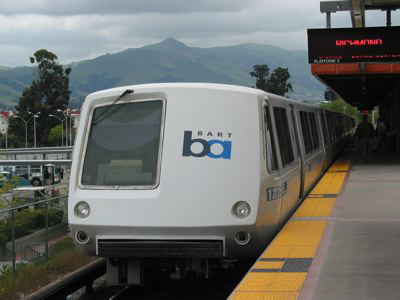No Light Rail in Vancouver!
Where Is Your Adaptive Management Now?

A supplemental environmental impact report (SEIR) has just been issued for the extension
of BART to San Jose. Planners say the 16.1-

By coincidence, $4.7 billion just happens to be the cost of Denver’s FasTracks plan,
which is supposed to build about 119 new miles of rail lines plus busways for 18
miles of bus-
The Santa Clara Valley Transportation Authority (VTA), which wants to build the BART
line and published the SEIR, is in the midst of a severe financial crisis. It sold
bonds to build light-
Last June, county voters rejected an increase in the sales tax that VTA said was
needed to build the BART line. Without that increase, VTA said it did not even have
enough money to operate the light-
Even the Sierra Club opposes construction of the San Jose BART line, saying that
it “delivers too little and costs too much.” The Sierra Club instead supports “off-
Nevertheless, VTA has decided to go forward with the BART line. So what does the SEIR tell us? Chapter 4.2 projects that the line will add less than 50,000 new transit trips per day(p. 11). Fifty thousand would be a lot in a place like Portland, but in the area being studied (which is only the south part of the San Francisco Bay Area), it is just a 2 percent increase in transit ridership.
Construction costs have gone up by a billion dollars and projected new trips have declined by nearly 20 percent since the major investment study was written for the line in 2001. Even though bus improvements cost far less in both capital and operating costs, the major investment study eliminated bus alternatives because they did not attract as many new riders. With the reduced number of riders in the current SEIR, buses should be reconsidered, but they are not currently on the table.
In 2005, the Federal Transit Administration announced cost-
Only three other projects received such an exemption: San Francisco’s Third Street light rail, Portland’s Wilsonville commuter rail, and Washington, DC’s rail extension to Dulles Airport. All of these projects are stinkers, but the San Jose project is the only one that the FTA also gave a “not recommended” rating to because of VTA’s “poor operating financial condition . . . and the lack of funding available to operate the” line.
Although BART will operate the line, VTA will be responsible for paying most if not
all of the operating subsidy. Since VTA doesn’t even have enough money to operate
its own light-
Chapter 4.2 also shows that the BART line will have zero impact on congestion (see
pp. 26-
Why is VTA incapable of learning from its own very recent history? Its board is politically
driven and politics overrules common sense. The main constituency for building rail
is rail contractors, railcar manufacturers, and real estate developers who enjoy
subsidies and a relaxed permitting process when they build near a rail station (aka
“transit-
1
Trackback • Posted in News commentary, Planning Disasters, Transportation
Reprinted from The Antiplanner